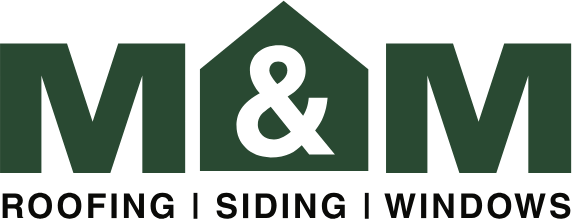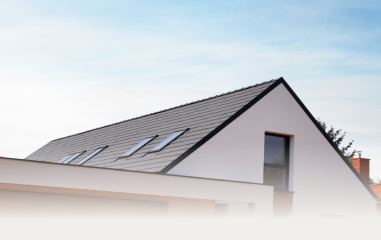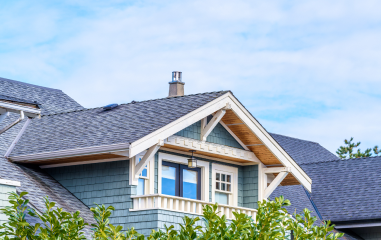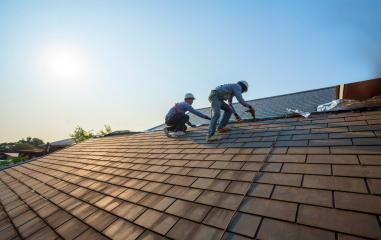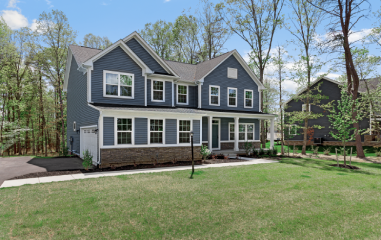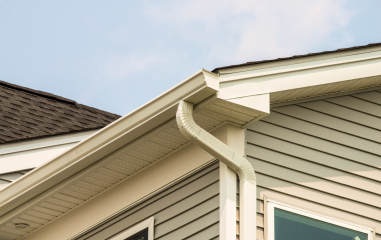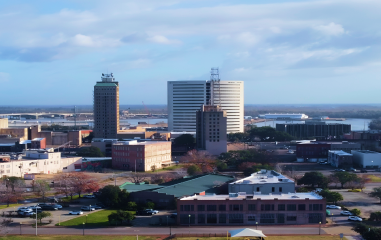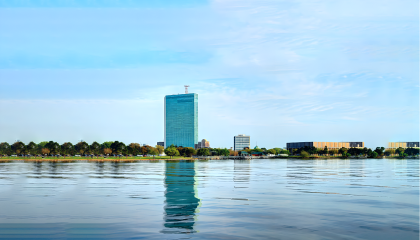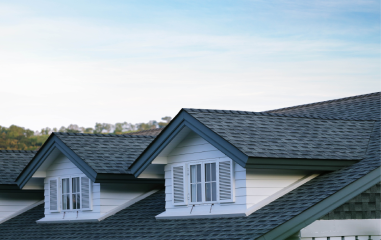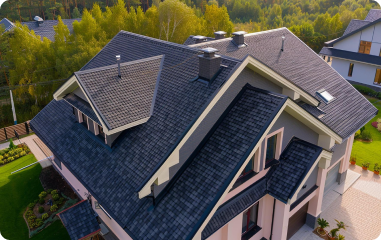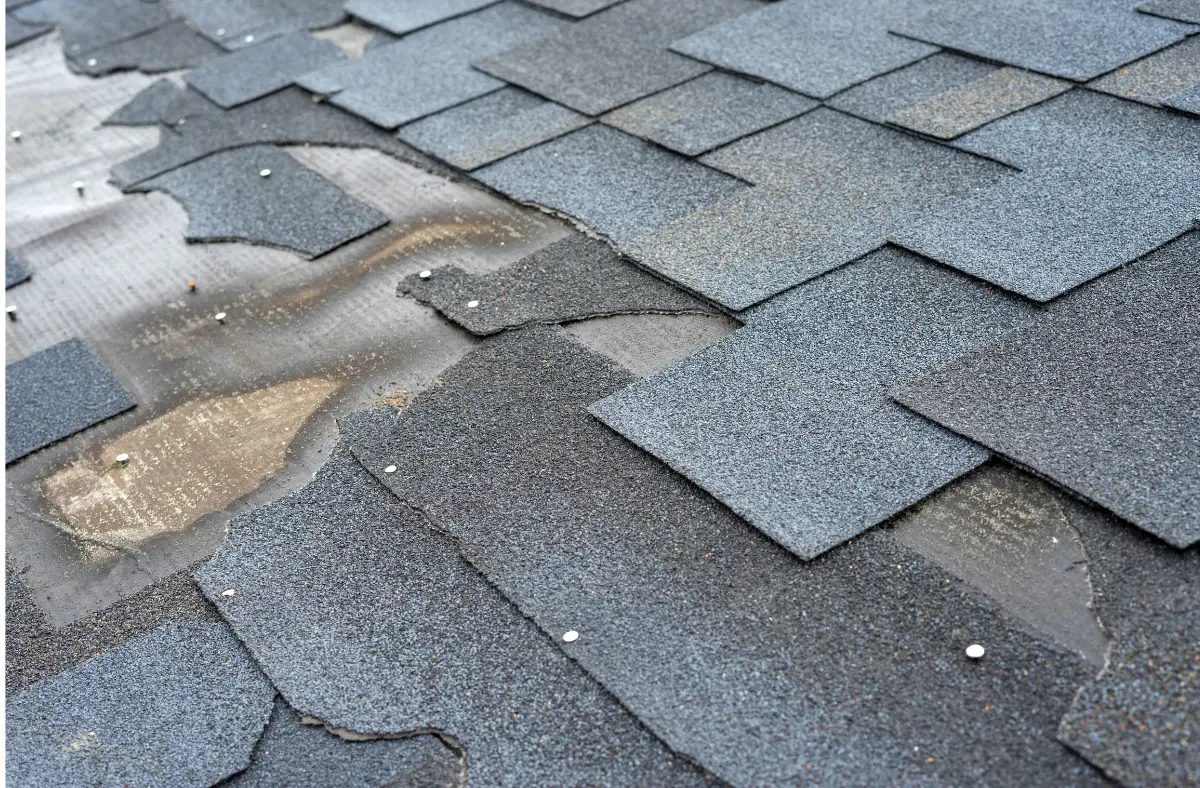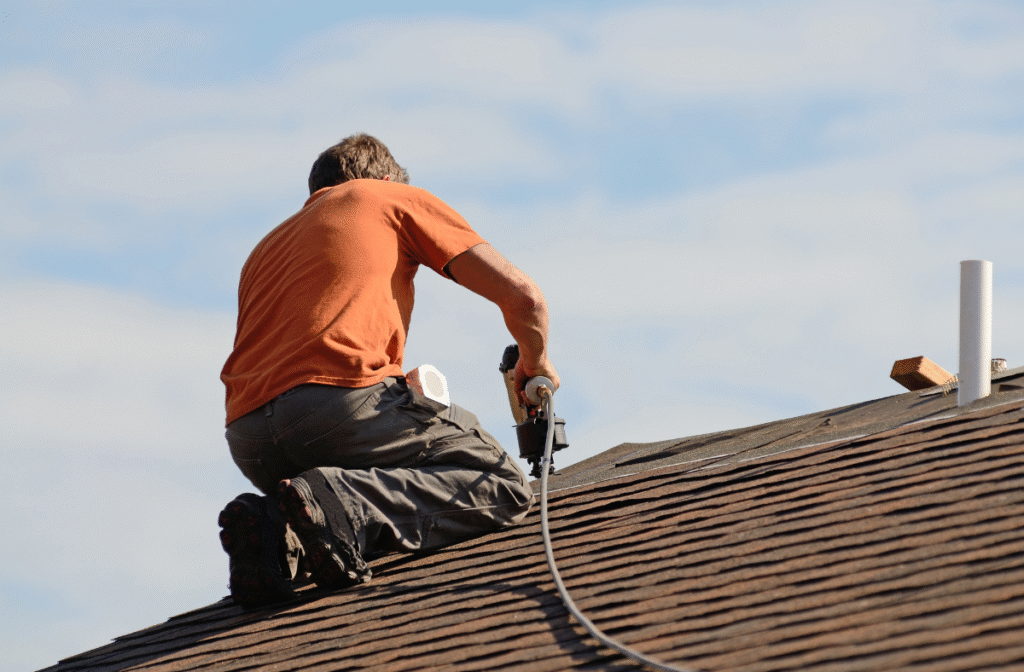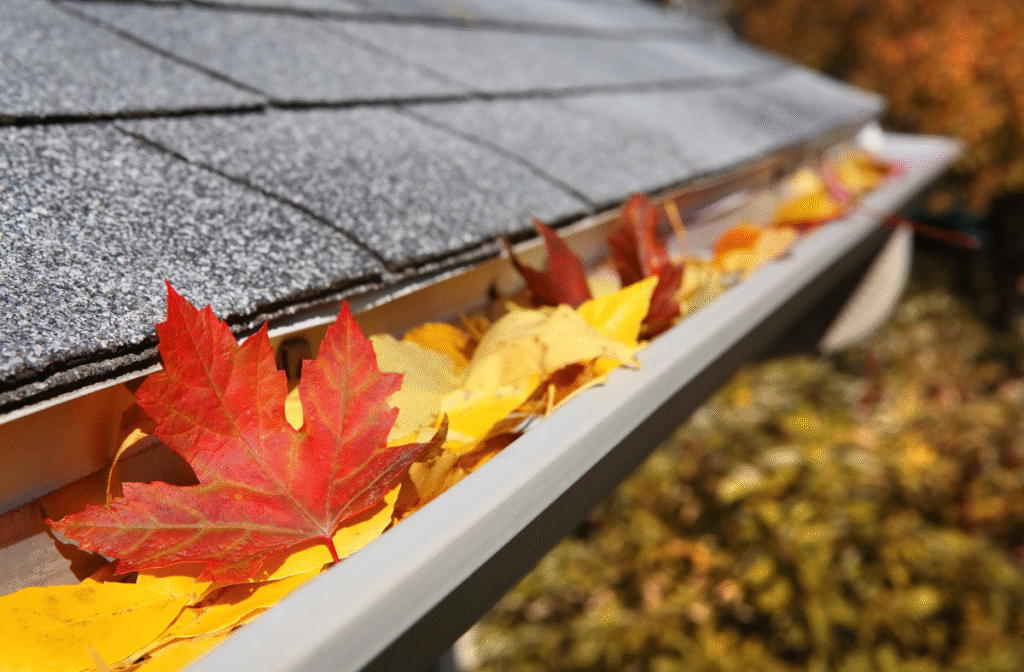Roof damage isn’t always obvious. Just because you don’t have a gaping hole in your roof doesn’t mean you don’t have any damage. You need to know exactly what to look for when examining your roof for damage.
In this guide, we highlight eight signs of roof damage, as well as how to inspect your roof for damage.
Table of Contents
Visible Shingle Damage
One of the most obvious signs of roof damage is visible damage to your shingles. We’re talking missing, cracked, or curled shingles that are easily noticeable from the ground. This could be due to severe weather conditions like high winds or heavy rain, as well as normal wear and tear over time.
Even though damaged shingles may not seem like a big problem, they can become a significant problem if you don’t take care of them as soon as possible. Damaged shingles leave your roof vulnerable to water leaks and can lead to more extensive damage if left untreated.
Water Leaks or Stains
Water leaks or stains in your home are never a good sign, and are often a sign of roof damage. They’re especially concerning when they’re coming from the ceiling. If you notice any wet spots or discoloration on your ceiling, it could be a sign of roof damage. It could indicate there’s a leak in your roof, allowing water to seep into your home. Shingles may be damaged, the underlayment may have failed, or the flashing on your roof could have deteriorated.
It’s essential to address water leaks as soon as possible. Not only can they cause damage to your home’s interior, but they can also lead to mold growth which can be hazardous to your health. Even if a water leak seems small, it’s important to get it looked at ASAP.
Does you home have roof damage? Call us for a free roof inspection today.
Sagging or Drooping Roof
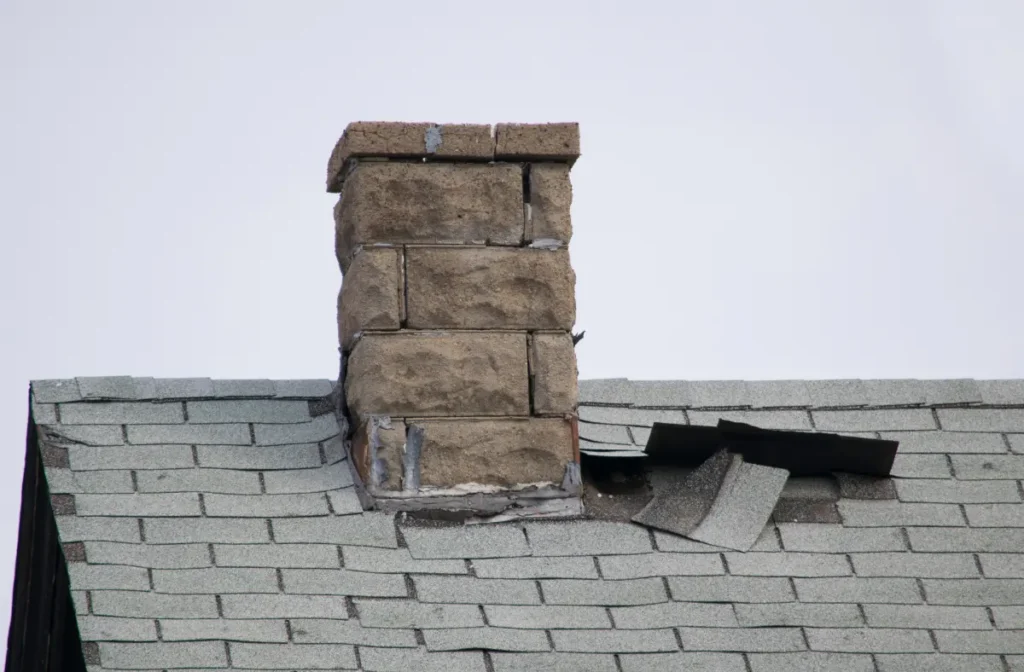
If you see a sag or drop in your roof, that is almost certainly a sign of roof damage. Your roof shouldn’t be sagging, and if it is there’s probably some damage to its infrastructure. It could be caused by heavy snow or rain weighing down on your roof, weakening the supports and causing it to sag.
A drooping roof is also a sign of structural damage, which can be expensive and dangerous if left unaddressed. Your roof could be on the verge of collapse unless immediate action is taken.
If you notice any changes in the shape or appearance of your roof, it’s best to have a professional inspect it immediately.
Damaged Flashing or Sealant
Take a close look at the flashing around chimneys, vents, and skylights for rust, cracks, or gaps. Damaged flashing often leads to roof damage, specifically leaks. If the sealant around your flashing has deteriorated, it’s time to replace it.
Damaged flashing and sealant can allow water to penetrate your roof, resulting in costly damage to both the interior and exterior of your home.
It’s essential to regularly check and maintain your roof’s flashing and sealant to prevent potential leaks or structural damage.
Gutter and Downspout Problems
Issues with your gutters or downspouts can also be a sign of roof damage. Specifically, look for accumulations of shingle granules or debris in the gutters. This can indicate damage of some kind to your shingles, which may then weaken the entire roof.
Clogged or damaged gutters and downspouts can also lead to water pooling on your roof, causing potential leaks and damage. Consistent maintenance of your gutters and downspouts is crucial in preventing roof damage.
Moss, Mold, or Algae Growth
If you see moss, mold, or algae growing on your roof, it probably means that moisture is trapped somewhere, which can then damage your shingles. Moss and algae growth can also create a slippery surface, making it dangerous to walk on your roof.
Cleaning your roof and removing any accumulated organic matter is important to prevent further damage. If the growth is extensive, consider hiring a professional to help remove it safely.
Aging Shingles
Over time, shingles can become worn out and damaged due to exposure to the elements. This wear and tear can lead to cracks, buckling, or missing shingles. In light of this, it’s really important to regularly inspect your shingles for signs of aging or damage.
One specific sign of aging shingles it if your roof shines in the sun. This means that the granule layer has worn out and the underlying asphalt is exposed.
Replace damaged or worn-out shingles as soon as possible to prevent further damage to your roof. Neglecting aging shingles can lead to leaks and structural issues, which can be costly to repair.
Concerned about roof damage? Call us today for your free roof inspection.
Increased Energy Bills
Have you noticed an unexplainable increase in your energy bills? You might have roof damage. If your roof is not properly sealed and insulated, it can allow air to escape, making your HVAC system work harder and increasing your energy costs.
Regularly inspecting and maintaining your roof’s insulation can help prevent this problem. In addition, consider investing in energy-efficient roofing materials that will better regulate the temperature inside your home.
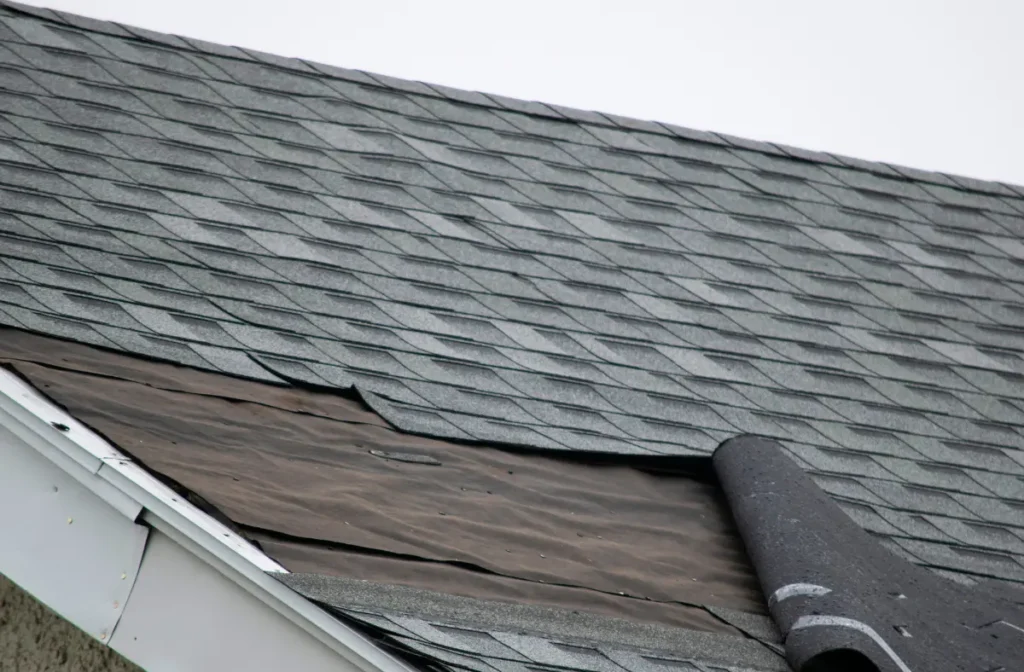
Sheathing Decay
Sheathing is the layer of plywood that forms the foundation of your roof. When this layer becomes wet or damaged, it can lead to decay and rot, compromising the structural integrity of your roof. This can be caused by leaks, moisture buildup, or poor ventilation.
Checking your attic for signs of water damage is important in preventing sheathing decay. Additionally, ensuring proper ventilation and addressing any leaks immediately can help prolong the life of your roof’s sheathing.
How To Inspect Your Roof For Damage
You should perform at least semi-regular inspections of your roof, especially if you live in areas of extreme weather. Follow these steps.
Begin On The Inside
Go up into your attic and look for signs of water damage, such as mold or stains on the walls and ceiling. If you notice any wet spots, it could indicate a leak in your roof.
Go Outside
From the ground, look at your gutters and downspouts. Do you see any parts sagging or bent? Also, look for any debris buildup that could cause water to pool and potentially damage your roof.
Walk around your roof and look for any missing or damaged shingles. These can be caused by extreme weather, such as strong winds or hail, or simply from age and wear.
Check The Roof
If you feel comfortable, go on your roof and perform an up-close inspection. Check for torn, cracked, warped, or missing shingles. Also look for any gaps or holes in the roof that could allow water to seep through. If you see any areas sagging, make particular note of those. Also, make sure that all the things that penetrate your roof, like your chimney, are sealed tightly.
If you don’t feel comfortable being on your roof, call M&M Roofing and Siding for a FREE roof inspection. One of our roofing experts will go up on your roof and perform a thorough inspection of all areas. They’ll give you a thorough run-down of every potential problem and provide you with concrete next steps.
Final Thoughts
Hail damage to your roof can be a stressful and expensive problem. But, by taking preventative measures and working with reputable roofing companies, you can minimize the impact of hail storms on your home. With proper preparation and maintenance, you can ensure that your roof is resilient against hail storms for years to come.
If you have hail damage to your roof and want a FREE roof inspection to assess the damage, call us today.
Call us today so we determine if you have significant roof damage and determine the next steps
